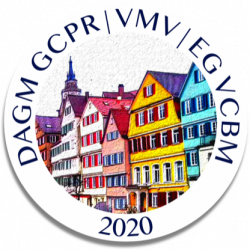Tutorial: Game Engines for Visualization
In recent years, games engines like Unreal Engine and Unity have gained attention as a foundation for data visualization in academic research, especially since they can be used freely for personal projects. In addition, the creators of these engines are also extending their use in industrial applications beyond entertainment. While using such an engine of course requires additional knowledge or training, the benefits are that it offers a stable software environment that already provides the developers with a lot of functionality (e.g., rendering capabilities, user interaction, or cross-platform usability). In this half-day tutorial, two popular game engines (Unreal Engine and Unity 3D) will be introduced with respect to their potential for data visualization.
Monday, September 28, 2020; 13:30 – 17:30
Session chair: Michael Krone
Opening / Invited Talk (13:30-14:00)
Invited Industry Talk: TWT GmbH Science & Innovation
https://www.twt-gmbh.de/ / https://www.tronis.de/
Speakers: Dr. Michael Keckeisen, Caroline Handel, Dr. Felix Kistler
Game Engines for Visualization – Part 1: Unreal Engine (14:00-15:30)
Speaker: Patric Ljung
Unreal Engine, by Epic Games, has evolved over the last two decades and is a proven high-end game engine for delivering AAA gaming titles. In recent years Epic has made significant strides into non-game applications, such as Architectural Visualization, Product Visualization, Mixed Reality Live Broadcasting, and Virtual Production in the movie industry.
In this part to the tutorial, we will give an overview of Unreal Engine then dive into the Unreal Editor and explore how it can be used for Data Visualization. We will have a look at different aspects, such as Materials, Blueprints, coding in C++, and Niagara, the visual effects plugin, by reviewing and exploring some examples.

Coffee Break (15:30-16:00)
Game Engines for Visualization – Part 2: Unity 3D (16:00-17:30)
Speaker: Xavier Martinez
Unity 3D is currently the most used game engine thanks to the support of a large choice of platforms and a relative ease of use compared to its competitors. Recent initiatives by Unity technologies provide high-end performance (C# burst compiler) and customizable rendering pipelines to extend Unity capabilities and get the most out of the game engine. These changes make Unity even more relevant for scientific visualization in a game engine.

In this part of the tutorial, we will tackle a classical visualization problem: rendering a large amount of spheres. We will take a look at different implementations to render objects using Unity and go through several optimization processes. This journey will be an opportunity to learn about coding and rendering in Unity in a visualization-oriented tutorial.
Speakers

Patric Ljung
Linköping University, Sweden
Dr. Patric Ljung is a senior lecturer in Immersive Visualization since 2013 in the division for Media and Information Technology at Linköping University, Sweden, and research coordinator at the Visualization Center C in Norrköping, Sweden. His current interest and work involves immersive visualization for interaction with autonomous systems and science communication for the public at science centers. Prior to he rejoined with Linköping University he was a research scientist and project manager at Siemens Corporate Research, Princeton NJ between 2007 and 2013 where he worked with the eXtensible Imaging Platform and visualization engine for Siemens Ultrasound. Dr. Ljung received his PhD in Scientific Visualization from Linköping University 2006. He began his career as Software Engineer for industrial and telecom applications in 1989 until 1995. He is also running at least 2 km every day since August 17, 2015.

Xavier Martinez
Laboratoire de Biochimie Théorique, CNRS, France
Dr. Xavier Martinez is currently a post-doctoral fellow in Marc Baaden’s team at LBT (Laboratoire de Biochimie Théorique) in Paris, France, working on molecular visualization. In 2018, he started working on UnityMol, a molecular viewer based on Unity game-engine, to provide state-of-the-art molecular representations in VR and AR. Thanks to his PhD in computer science at the LIMSI, Venise team, he is using his knowledge in interaction and bioinformatics to provide software solutions to researchers and collaborates with companies to improve drug-design processes.

